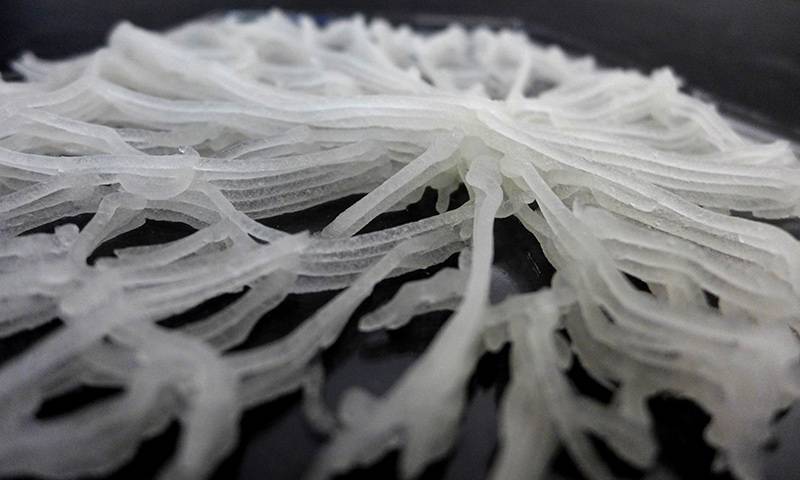Shneel Malik | PhD Thesis | Viscous Biomaterials for Application in Architecture: Large-scale Manufacturing of Algae-laden Bio Scaffolds

Research
Subject
Viscous Biomaterials for Application in Architecture: Large-scale Manufacturing of Algae-laden Bio Scaffolds
First and second supervisors
Abstract
This research explores the role of ’ or rather ‘viscous’ (water-based) biologically constructed materials, further proposing architectural prototypes built around these findings. The study aims to gather an advanced understanding of the composition, structure and processing of complex biological tissues and systems, and how these can be successfully incorporated within designed synthetic biological materials that work as large-scale architectural scaffolds for bio-responsive growth.
This research tries to understand, through laboratory experiments, the concept of designing 3D water-based gel cell cultures, with the means of looking at adopting potentially large-scale architectural 'bio scaffolds'. This research involves the growth of the most simple cells – ‘algae’ cells amalgamating the behavior of photo bioreactors within gel-based 3D cultures, further giving rise to extracellular matrix-architectural components that increase their capability to interact with the environment.
What remains key among such technological advancements is the need to engineer a material process that consumes low amounts of energy, produces little to no waste, and takes advantage of ambient conditions.
In order to produce such scaffolds the research aims to employ innovative robotic additive manufacturing techniques in order to control, regulate and print with the highest level of accuracy.
Biography
Shneel Malik received her Master’s Degree in Architecture from The Bartlett, as part of the BiotA Lab. After receiving her Bachelor’s in Architecture from Amity University, India, she went on to work with a leading architectural practice, where she was a part of the design and construction of large infrastructure projects. She is currently pursuing her inter-disciplinary PhD, researching designing and fabrication of ‘viscous’ biomaterials for application in architecture. She continues to be featured as a columnist in a leading international design magazine, where she discusses the shift in design thinking – with labs and studio practices merging to create new sorts of prototypes, experimenting with new biological materials and forms.
PhD Close
Close

